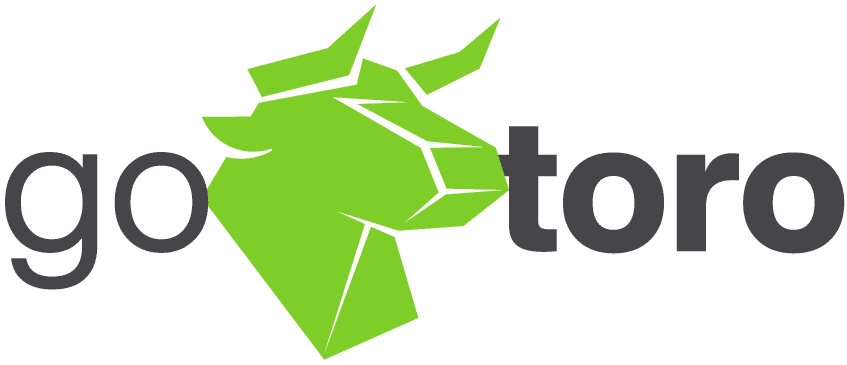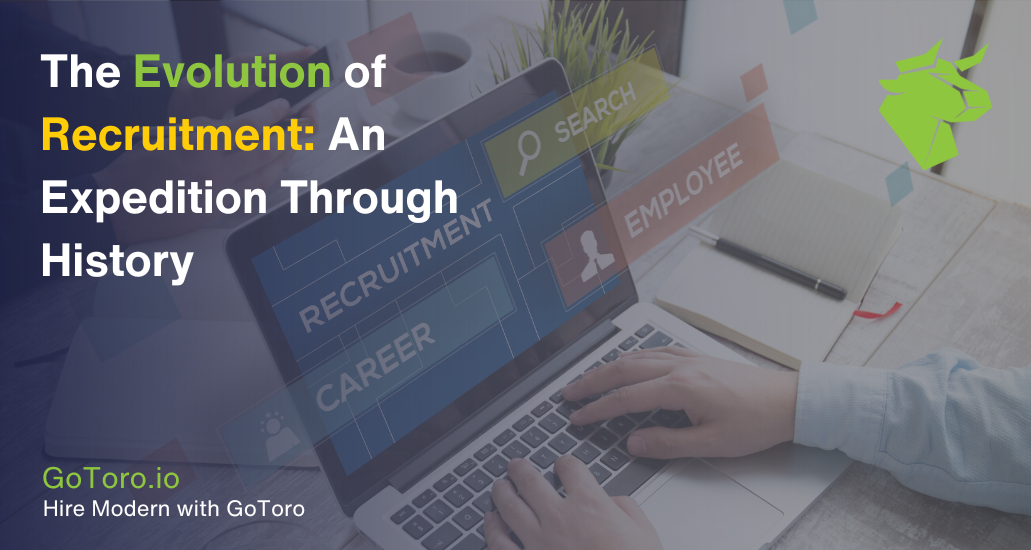Recruiting has always been a critical aspect of building a successful workforce. Understanding the evolution of recruitment practices offers valuable insights into how we have arrived at today’s sophisticated methods. This journey through recruitment evolution reveals the dynamic nature of hiring practices, shaped by economic, technological, and social changes.
In this blog, we will explore the major periods in the history of recruitment, starting from the Industrial Revolution, moving through the 20th century, and into the modern era. We will examine how each phase has contributed to the current landscape of recruitment, highlighting key developments and innovations along the way.
Industrial Revolution and Recruitment Evolution
Factory Labor and Mass Production
The Industrial Revolution marked a significant turning point in the evolution of recruitment. The rise of factories and mass production created an unprecedented demand for a large, stable workforce. With new machinery and the division of labor, factories needed to hire workers on a scale never seen before. This era necessitated a shift from small-scale, artisanal production to industrial-scale operations, driving changes in recruitment practices to meet the demands of mass production.
Shift Towards Centralized Hiring Practices
As factories grew, so did the need for more organized and efficient hiring processes. This led to the development of centralized hiring offices within factories. Foremen and early personnel departments played crucial roles in managing the recruitment process, ensuring that the factories were staffed with the necessary labor force. These centralized practices laid the groundwork for modern human resource management and marked a pivotal moment in the recruitment evolution.
20th Century Innovations in Recruitment Evolution

Rise of Classified Ads and Recruitment Agencies
The 20th century brought significant innovations to the recruitment evolution, particularly with the emergence of newspapers as a platform for job advertisements. Classified ads became a popular and effective way for employers to reach potential candidates. This period also saw the birth and growth of recruitment agencies, which further professionalized and streamlined the hiring process. Recruitment agencies provided specialized services, connecting employers with suitable candidates and playing a vital role in the recruitment landscape.
World Wars and Military Drafting
The World Wars had a profound impact on recruitment practices. The need to mobilize large numbers of soldiers led to the establishment of formal military recruiting systems, which were highly organized and systematic. These systems not only influenced military drafting but also had lasting effects on civilian hiring practices. The structured approach to recruitment developed during the wars contributed to the evolution of recruitment strategies in the civilian workforce, emphasizing efficiency and organization.
Understanding the historical context of recruitment evolution helps us appreciate the advancements in hiring practices over time. From the Industrial Revolution’s centralized hiring practices to the 20th century’s innovations in classified ads and recruitment agencies, each phase has contributed to shaping today’s recruitment landscape. As we continue to explore this history, we gain a deeper understanding of the factors that have driven changes in recruitment and how these changes have prepared us for future developments.
Digital Age Revolution in Recruitment Evolution
Online Job Boards and Social Media Recruitment

The transition from print to digital job postings marked a significant milestone in the recruitment evolution. As the internet became more accessible, online job boards emerged as a revolutionary tool for employers and job seekers alike. This shift from traditional print advertisements to digital platforms allowed for a broader reach and more efficient matching of candidates with job openings.
Platforms like LinkedIn, Indeed, and Glassdoor have played pivotal roles in this digital age revolution. LinkedIn has become a cornerstone for professional networking and recruitment, enabling recruiters to connect with potential candidates directly. 77 percent of recruiters rely on LinkedIn (Top Resume, 2023). Indeed and Glassdoor offer comprehensive job search functionalities, company reviews, and insights, empowering job seekers to make informed decisions.
Social Media
Social media recruitment has become a cornerstone in the recruitment evolution, transforming how organizations attract and engage with potential candidates. Platforms like LinkedIn, Facebook, Twitter, and even Instagram have opened new avenues for recruiters to find and connect with talent. By leveraging social media, employers can tap into vast networks of professionals, showcase their company culture, and share job openings with a highly targeted audience. This approach not only broadens the reach of job advertisements but also allows for a more personalized and interactive candidate experience. Recruiters can engage with passive candidates who may not be actively seeking new opportunities but could be enticed by compelling content and direct outreach.
70% of managers said they have had success hiring candidates through social media. This makes perfect sense as that is where the millennial candidates are now found. (Apollo Technical, 2024)
Moreover, social media recruitment offers valuable insights through analytics and data tracking. Recruiters can monitor engagement metrics, such as likes, shares, comments, and click-through rates, to gauge the effectiveness of their recruitment campaigns. These platforms also enable the use of sophisticated targeting options to reach specific demographics, industries, or skill sets, ensuring that job ads are seen by the most relevant candidates. Additionally, social media recruitment supports employer branding efforts, as companies can highlight their values, achievements, and employee testimonials, creating a positive image that attracts top talent. As part of the broader recruitment evolution, social media continues to shape the future of hiring by making it more dynamic, data-driven, and candidate-centric.
Applicant Tracking Systems and Data Analytics
The introduction and evolution of Applicant Tracking Systems (ATS) represent another key development in the recruitment evolution. ATS software automates the hiring process, from posting job openings to managing applications and tracking candidate progress. This innovation has streamlined recruitment, making it more efficient and organized.
Data analytics has become an integral part of modern recruitment practices, transforming how organizations approach hiring. By analyzing vast amounts of data, recruiters can gain insights into candidate behavior, identify trends, and make data-driven decisions. This analytical approach helps improve the recruitment process, ensuring better candidate matches and enhancing overall efficiency.
The digital age revolution has undeniably transformed recruitment evolution, making it more dynamic and data-driven. Online job boards, social media recruitment, and applicant tracking systems have revolutionized how organizations find and hire talent, paving the way for a more efficient and effective recruitment landscape.
Modern Trends and Challenges in Recruitment Evolution

Remote Work and Gig Economy
The rise of remote work has significantly impacted the recruitment evolution, reshaping traditional hiring practices. As technology advances, more companies are embracing remote work, allowing employees to work from anywhere in the world. This shift has expanded the talent pool, enabling employers to hire the best candidates regardless of their geographical location. Just over one-third of workers in the U.S. who can work remotely do so all the time — while 41% are at least part-time remote on a hybrid setup (Pew Research Center, 2023)
The growth of the gig economy is another modern trend influencing recruitment evolution. Freelancers, contractors, and gig workers now make up a substantial portion of the workforce. This change has led to new recruitment strategies, focusing on flexibility and project-based hiring. Employers must adapt to these trends by offering more dynamic and adaptable work arrangements to attract and retain top talent.
Rise of Freelance Platforms in Recruitment Evolution
Freelance platforms like Upwork, Fiverr, and Freelancer have significantly contributed to the recruitment evolution. Upwork, the world’s largest freelancer platform, was incorporated in 1999 and generates over $2 billion in yearly revenue, offering over 8,000 skills with more than 3 million jobs posted annually. Fiverr processes over 3 million jobs each year across 100 categories in 196 countries (VC Bay, 2021). These platforms have revolutionized the gig economy, making it easier for employers to connect with freelancers worldwide and access a diverse talent pool.
Diversity and Inclusion Initiatives
In recent years, there has been an increasing focus on creating diverse and inclusive workplaces, a crucial aspect of recruitment evolution. Companies are recognizing the value of diversity in driving innovation, improving decision-making, and enhancing company culture. As a result, diversity and inclusion initiatives have become a priority in recruitment strategies.
Promoting diversity in hiring involves various strategies and challenges. Companies must implement unbiased recruitment practices, provide diversity training, and foster an inclusive environment that supports all employees. Despite these efforts, challenges such as unconscious bias and resistance to change can hinder progress. Nevertheless, the commitment to diversity and inclusion remains a vital component of modern recruitment evolution.
Modern trends and challenges in recruitment evolution, such as remote work, the gig economy, and diversity and inclusion initiatives, continue to shape the landscape of hiring practices. These trends reflect the ongoing evolution of recruitment, highlighting the need for adaptability and a forward-thinking approach in the ever-changing world of work.
Future Prospects in Recruitment Evolution

AI-driven Recruitment Tools
As we look towards the future, AI-driven recruitment tools are set to play a significant role in the recruitment evolution. Artificial Intelligence (AI) is transforming how organizations approach hiring, making the process more efficient and data-driven. One such tool is GoToro’s L.E.O. (Leading Edge Optimization), which leverages AI to enhance programmatic job advertising and candidate matching.
GoToro’s L.E.O. (Leading Edge Optimization)
GoToro’s L.E.O. represents a cutting-edge advancement in AI-driven recruitment. This tool uses sophisticated algorithms to analyze candidate data, job requirements, and market trends, providing recruiters with unparalleled insights and precision in hiring. By automating repetitive tasks such as weeding out unqualified applicants and handling the initial candidate outreach, L.E.O. frees up recruiters to focus on strategic decision-making and personalized candidate interactions.
L.E.O. excels in several key areas:
- L.E.O. eliminates manual processes, reducing the time and effort required to manage job ad campaigns. This allows recruiters to focus on more strategic aspects of hiring.
- AI algorithms analyze candidate behavior and preferences to target job ads with pinpoint accuracy. This ensures that ads are seen by the most qualified candidates, increasing the likelihood of successful hires.
- By optimizing ad placement and spend, programmatic tools ensure that recruitment budgets are used effectively. This reduces wastage and improves the return on investment for recruitment campaigns.
Benefits and Potential of Programmatic Job Advertising Tools
Programmatic job advertising is a revolutionary concept in the recruitment evolution, driven by AI tools like L.E.O. This approach automates the buying, placement, and optimization of job ads, ensuring they reach the most relevant candidates at the right time.
The potential of programmatic job advertising tools extends beyond efficiency and cost savings. These tools enable recruiters to build stronger employer brands by delivering consistent and engaging job ads across multiple channels. They also enhance the candidate experience by ensuring that job opportunities are relevant and accessible.
Ethical Considerations and Automation Impact
Despite the advantages, the rise of AI and automation in recruitment also brings ethical concerns that must be addressed in the recruitment evolution. One major concern is the potential for bias in AI algorithms. If not properly managed, AI tools can inadvertently perpetuate existing biases in hiring, leading to unfair and discriminatory practices. It is crucial for organizations to ensure that their AI systems are transparent, fair, and regularly audited to mitigate these risks.
Another significant aspect of the recruitment evolution is the impact of automation on the future job market and recruitment strategies. While automation can streamline recruitment processes, it also raises questions about the displacement of human roles and the future of work. Organizations must balance the efficiency gains from automation with the need to maintain a human touch in recruitment, ensuring that technology enhances rather than replaces the recruiter’s role.
In conclusion, the future prospects of recruitment evolution are marked by the integration of AI-driven tools and the ethical considerations they entail. As we navigate this evolving landscape, it is essential to leverage the benefits of AI while addressing its challenges to create a more efficient, fair, and inclusive recruitment process. The continued evolution of recruitment will depend on our ability to harness technology responsibly, shaping a future where both employers and candidates can thrive.
Recapping Recruitment Evolution and Looking Forward
Recap of the Evolution of Recruitment Practices Through History
The journey through the evolution of recruitment practices reveals a fascinating transformation shaped by technological, economic, and social changes. From the Industrial Revolution’s centralized hiring practices to the innovative use of AI-driven tools in modern recruitment, each era has contributed to the dynamic landscape we see today.
- The Industrial Revolution was marked by the rise of factories, mass production, and the development of centralized hiring practices.
- The 20th Century brought innovations highlighted by the emergence of classified ads, recruitment agencies, and the impact of World Wars on military and civilian hiring practices.
- The Digital Age Revolution characterizes the transition to online job boards, social media recruitment, and the adoption of Applicant Tracking Systems (ATS) and data analytics.
- The rise of remote work, the gig economy, and a strong focus on diversity and inclusion initiatives define modern trends.
- Future prospects are driven by AI-driven recruitment tools like GoToro’s L.E.O., along with the ethical considerations and impact of automation on the job market.
Reflection on the Ongoing Changes and Future Directions in Recruitment Evolution
The ongoing evolution of recruitment practices underscores the need for adaptability and innovation in hiring strategies. As technology continues to advance, recruitment processes will become more efficient, data-driven, and inclusive. AI-driven tools and programmatic job advertising will play increasingly crucial roles in connecting employers with the right candidates, while ethical considerations will remain paramount to ensure fairness and transparency.
Looking ahead, the recruitment evolution will likely focus on further integrating AI and automation, addressing the challenges of remote work and the gig economy, and continuing to prioritize diversity and inclusion. These trends will shape the future of recruitment, creating opportunities for more effective and equitable hiring practices.
As the recruitment landscape continues to evolve, staying ahead of the curve is essential for success. GoToro offers cutting-edge AI-driven recruitment tools like L.E.O. (Leading Edge Optimization) that can revolutionize your hiring process. Experience the benefits of programmatic job advertising and predictive analytics to find the best talent efficiently and effectively.
Don’t miss out on the future of recruitment evolution. Request a demo from GoToro today and discover how our innovative solutions can transform your recruitment strategy.


